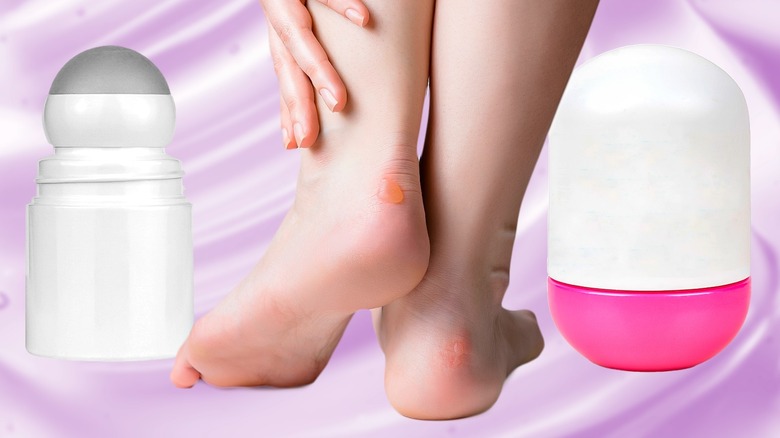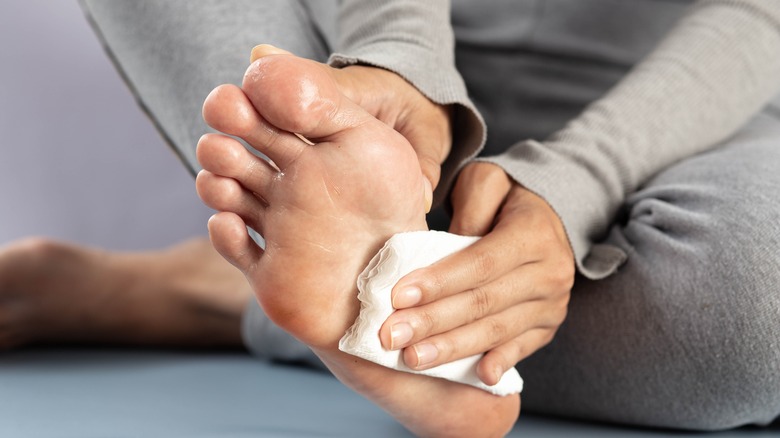The Beauty Staple That Could Make Blisters A Thing Of The Past
Deodorant is a staple item for most of us. Whether you choose an antiperspirant, deodorant, or natural deodorants that may be a healthier option, it is highly likely that you own a product of this nature. A nifty little use for deodorant that you may not be aware of, however, is the fact that it could also make blisters on your feet a thing of the past.
How, you ask? The science behind it is fairly simple. According to Medical News Today, a blister is the formation of excess skin on any given area of the body. It is meant to provide protection and cushioning against harm for the layers underneath the skin. Its formation can buy time for the skin underneath to heal. Blisters are usually soft flaps of skin that contain some sort of liquid within, which could be pus, blood, or simply sebum.
A 1998 study published in the Journal of American Academic Dermatology highlights that the wetness in the blister can be targeted through the application of antiperspirant. Researchers studied a group of military cadets to determine the results of this experiment.
Do deodorants actually help remove blisters?
In the study, participating individuals were sent on a 21-kilometer hike six days after applying the antiperspirant on their feet every night in preparation for the test. Cadets were told to apply this product to their feet for five consecutive nights. "Itching and rashes occurred in 57 percent of the antiperspirant group, but only six percent of the placebo group," Dr. Joseph J. Knapik, lead author of the study, told ScienceDaily. "This suggests that a large portion of the population may have problems with the antiperspirant used in the study."
Yet, a very important side effect was also noted: the incidence of skin irritation was much higher in the group that applied deodorant to their feet. Not referring to this as a complete deterrent, however, the study observed that measures could be taken to tweak the formulation or work around the causes of skin irritation. As Dr. Knapik noted, "Reducing the amount of the active compound or applying the antiperspirant every other night, rather than every night as the cadets did, may reduce the irritation."
How to use deodorant to prevent foot blisters
Knowing the inconclusive but positive-leaning evidence of this study, here is the best way to try this hack. Take a little bit of deodorant by spraying it on your hands and rub it on the area where you are most prone to getting blisters. For some people, this means rubbing it on the heels of the foot. For others, it could be around the toes, or pretty much everywhere. It is believed to work especially well when you are wearing new shoes and are worried about the potential blisters that may occur as a result.
This trick can prevent friction from creating the formation of a new blister — and it doesn't smell bad, either. Interestingly, deodorants can also be used on feet when you are attempting to prevent extra sweating in that area, just the same way it prevents sweating under the armpits.


